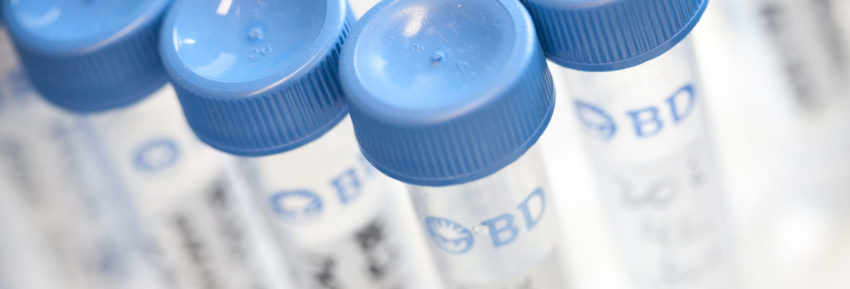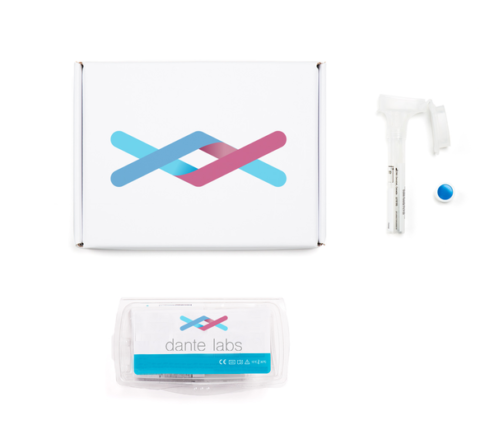This article was kindly sponsored by Dante Labs.
Contents
Fortunately, genetic research is progressing rapidly and testing is becoming more and more accessible. Just this year Dante Labs announced that you can have your whole genome sequenced for €850 – making it accessible to the public for the first time. It won’t be long before diets and medicines will be personalised for individuals.
Unique nutritional requirements
You might be tempted to think that genetics don’t have a massive impact on your nutritional requirements. Or if it does, it would only be a few mg’s of vitamin C here, and a few IU of vitamin D there, but you would be wrong. Here are just a few examples to show how greatly genetics impact your nutritional needs:
Milk – lactase enzyme
Milk is a very well known example. For many, milk is a pretty healthy food. It contains essential vitamins, minerals, good quality protein and important fats. Of course, all foods have pros and cons, but on the whole, the pros greatly outweigh cons (especially raw full fat milk). However, if you lack the gene to make lactase – the enzyme that digests the sugars in milk – the cons heavily outweigh the pros. You experience bloating, stomach cramps and become quite sick!
Vitamin C – SLC23A1 gene
A mutation in the gene that makes vitamin C transport proteins (SLC23A1) can cause circulating vitamin C levels to differ greatly from person to person. These proteins reabsorb vitamin C from the kidneys, which prevents it being passed out in urine. By doing this, higher circulating level of vitamin C can be maintained in the body1, which is particularly important considering your body cannot store it.
A small mutation in this gene can impair its ability to transport vitamin C by as much as 75%. This means that circulating levels of vitamin C will drop much quicker in individuals with this mutation2, putting circulating vitamin C at sub-optimal levels. With high levels of vitamin C being strongly association with lower risks of cancer and heart disease 3, carrying this mutation may mean you require more vitamin C, or ingest vitamin C more regularly than those who don’t, to keep healthy. This genetic mutation is found commonly in individuals of African origin, is less common in Caucasians, and is rare in Asian populations.
Conversely, a different mutation in the same gene has been shown to slightly increase circulating vitamin C levels4. This mutation is also associated with a reduced risk of follicular lymphoma5, which, considering vitamin C’s role in helping protect against cancers and its importance for skin health, isn’t too surprising. This mutation has been found in British and American populations, although because these studies were conducted in these regions, we cannot say if the mutations are isolated to them.
Magnesium – TRPM 6 gene
A mutation in the TRPM 6 gene, which encodes the protein responsible for absorbing magnesium in the small intestine, can reduce absorption of dietary magnesium to 35%6. With the gene acting normally, absorption of magnesium is usually 70%, meaning this mutation causes a 50% reduction in absorption. This single mutation is enough to cause serious magnesium deficiency, and in order to counteract it, magnesium consumption needs to be increased 5 fold7.
With magnesium being such an essential nutrient in the body, and already low in most Western diets, identifying this mutation could be important for health.
Coeliac/ Non-Celiac Gluten sensitivity
Although Coeliac disease can be tested for, Non Coeliac Gluten sensitivity (NCGS) and similar disorders are quite difficult. These disorders can increase intestinal permeability8, but lack the immune response of Coeliac disease. There are often few external symptoms, and this makes it is very hard to conclusively identify, so people can suffer from NCGS without really knowing it.
The intestinal wall covers an impressive 400m2.. It acts as a barrier against pathogens/ toxins and absorbs our food. Damage or reduced function to the intestinal wall can have far reaching health implications such as increased stress on the immune system, risk of infection, poor nutrient absorption, fatigue, and so on. Being able to identify the genes responsible for NCGS could improve the quality of life of many people.
These are just a handful of examples to highlight how genes impact your nutritional requirements, but already you can see how this can develop into a personalised diet. Perhaps you have the mutation on the SLC23A1 which causes a reduction in vitamin C circulating, but have no sensitivity to gluten? Time you looked into Amla9 sandwiches! (Amla, or Indian gooseberry, has one of the highest concentrations of vitamin C).

Prevention and personalised medicines
Genes can not show you what you need to eat, but what diseases you have a heightened risk for. For example, mutations in the BRCA 1 gene greatly increase your risk of developing breast cancer10, there are several genes which have varying impact on the development of cardiovascular disease and heart disease11, and some gene variations increase your risk of developing Alzheimer’s Disease by 40%12.
Cardiovascular disease alone accounts for more than a quarter of all UK deaths13, 27% of all cases of breast cancer are preventable14 and by 2025 over 1 million people in the UK will have Alzheimers Disease15. With all these diseases (and many more), early detection and treatment is key to preventing and beating them. With current methods, early detection is not always very easy, and these diseases are often only detected when they have started to develop. With genetic testing, the risk of these diseases can be identified very early on, and steps can be taken to either completely prevent the disease, and treat it at the earliest signs of development.
The ever decreasing cost of genetic testing
The price of genetic testing is dropping quickly. The first time the human genome was sequenced it cost around 2.7 billion dollars, and it took the best part of a decade16. In 2007 the price came down to $350,000 dollars, which is a dramatic drop, but still an incredible sum of money – enough to buy a nice house and still have change. In 2010, the price to get your DNA sequence was $50,000. Another big drop, but still not affordable.
Now, thanks to Dante Labs – a direct-to-consumer genetic service – genome sequencing is at a price that the public can afford. You can have your whole genome sequenced for €850, or have your risk of developing breast cancer tested for €349. Although this is still a meaningful amount of money, complete genome testing is now in reach for most people. Reading your personal blueprint to life, and understanding your risk of diseases has never been easier. You can now, for the first time, develop a truly personal diet, understand your future risk of disease, and even understand your genetic ancestry.
Summary
For a long time we have followed the RDA’s and medicine recommendations which are designed to be suitable for the entire public in a one-size-fits-all model. This was the best we had for a long time, but because everyone has a unique genetic code, everyone has unique requirements. Broad nutritional recommendations and medicines are soon to be a thing of the past. With genetic testing coming on in leaps and bounds, personalised diets and medicines will take over – and at the rate genetic testing is developing, this isn’t too far in the future. Already full genome testing available to the public for €850, and our understanding of our genome is rapidly advancing.
References
- Alexander J. Michels. (2013). Human Genetic Variation Influences Vitamin C Homeostasis by Altering Vitamin C Transport and Antioxidant Enzyme Function. Annu Rev Nutr. 33, 45-70.
- Corpe CP. (2010). Vitamin C transporter Slc23a1 links renal reabsorption, vitamin C tissue accumulation, and perinatal survival in mice. J Clin Invest. 120 (4), 1069-83.
- Melissa A. Moser. (2016). Vitamin C and Heart Health: A Review Based on Findings from Epidemiologic Studies. Int J Mol Sci. 8 (17), 1328
- Cahill LE. (2009). Vitamin C transporter gene polymorphisms, dietary vitamin C and serum ascorbic acid. J Nutrigenet Nutrigenomics. 6 (2), 292-301.
- Skibola CF. (2008). Polymorphisms in the estrogen receptor 1 and vitamin C and matrix metalloproteinase gene families are associated with susceptibility to lymphoma. PLoS One. 7 (3), e2816.
-
R Swaminathan. (2003). Magnesium Metabolism and its Disorders. Clin Biochem Rev. 2 (24), 47-66.
- Konrad M. (2003). Recent advances in molecular genetics of hereditary magnesium-losing disorders.. J Am Soc Nephrol. 1 (14), 249-60.
- Carlo Catassi. (2013). Non-Celiac Gluten Sensitivity: The New Frontier of Gluten Related Disorders. Nutrients. 10 (5), 3839-3853.
- Praveen Sharma. (2013). Vitamin C Rich Fruits Can Prevent Heart Disease. Indian J Clin Biochem. 3 (28), 213-214.
- NIH. (2015). BRCA1 and BRCA2: Cancer Risk and Genetic Testing. Available: https://www.cancer.gov/about-cancer/causes-prevention/genetics/brca-fact-sheet#q1. Last accessed 25/4/2017.
- Hiroyuki Morita. (2005). Genetic causes of human heart failure. J Clin Invest. 3 (115), 518-526.
- Chia-Chen Liu. (2013). Apolipoprotein E and Alzheimer disease: risk, mechanisms, and therapy. Nat Rev Neurol. 2 (9), 106-118.
- British Heart Foundation. (2015). Heart statistics. Available: https://www.bhf.org.uk/research/heart-statistics. Last accessed 25/4/2017.
- Cancer Research UK . (2014). Breast cancer statistics. Available: http://www.cancerresearchuk.org/health-professional/cancer-statistics/statistics-by-cancer-type/breast-cancer#heading-Four. Last accessed 25/4/2017.
- Prince, M et al. (2014). Dementia UK. Available: https://www.dementiastatistics.org/statistics-about-dementia/prevalence/. Last accessed 25/4/2017.
- National Human Genome Research Institute. (2010). 2003 Release: International Consortium Completes HGP. Available: https://www.genome.gov/11006943/human-genome-project-completion-frequently-asked-questions/. Last accessed 25/4/2017
Images courtesy NASA Marshall Space Flight Center and Rowan University Publications.

